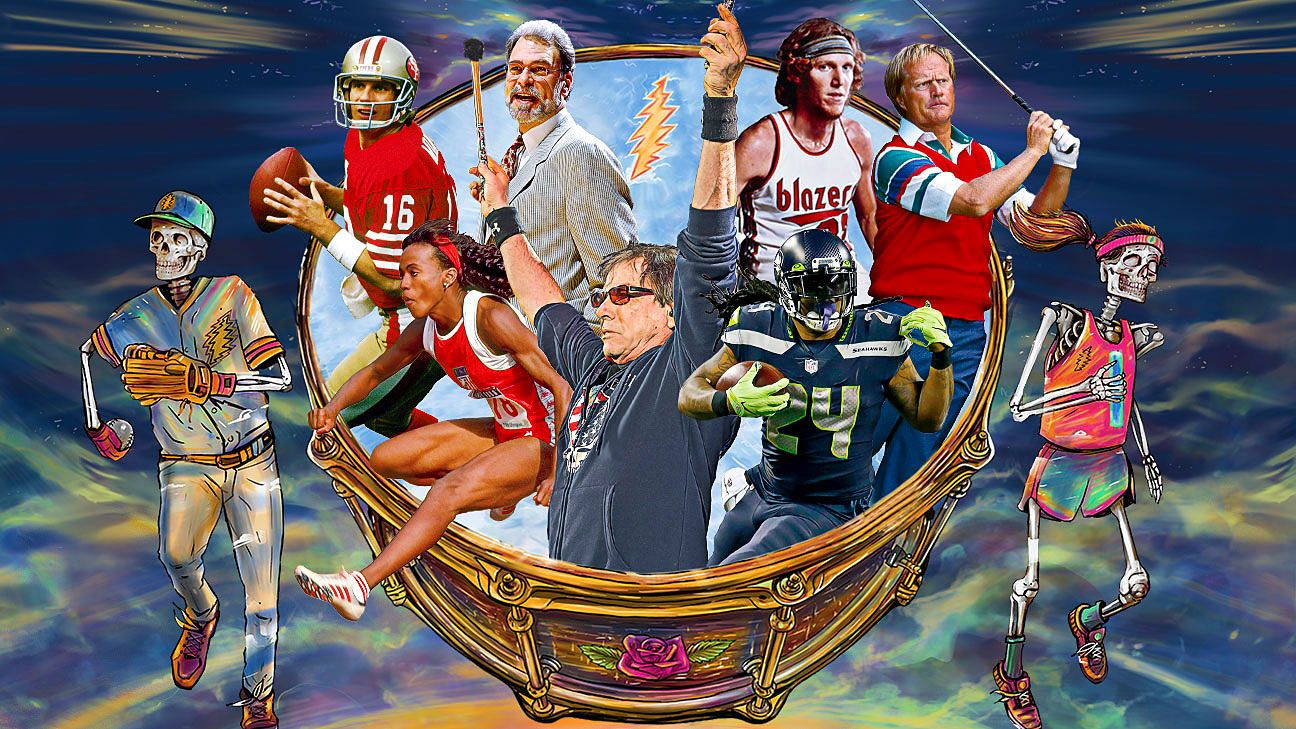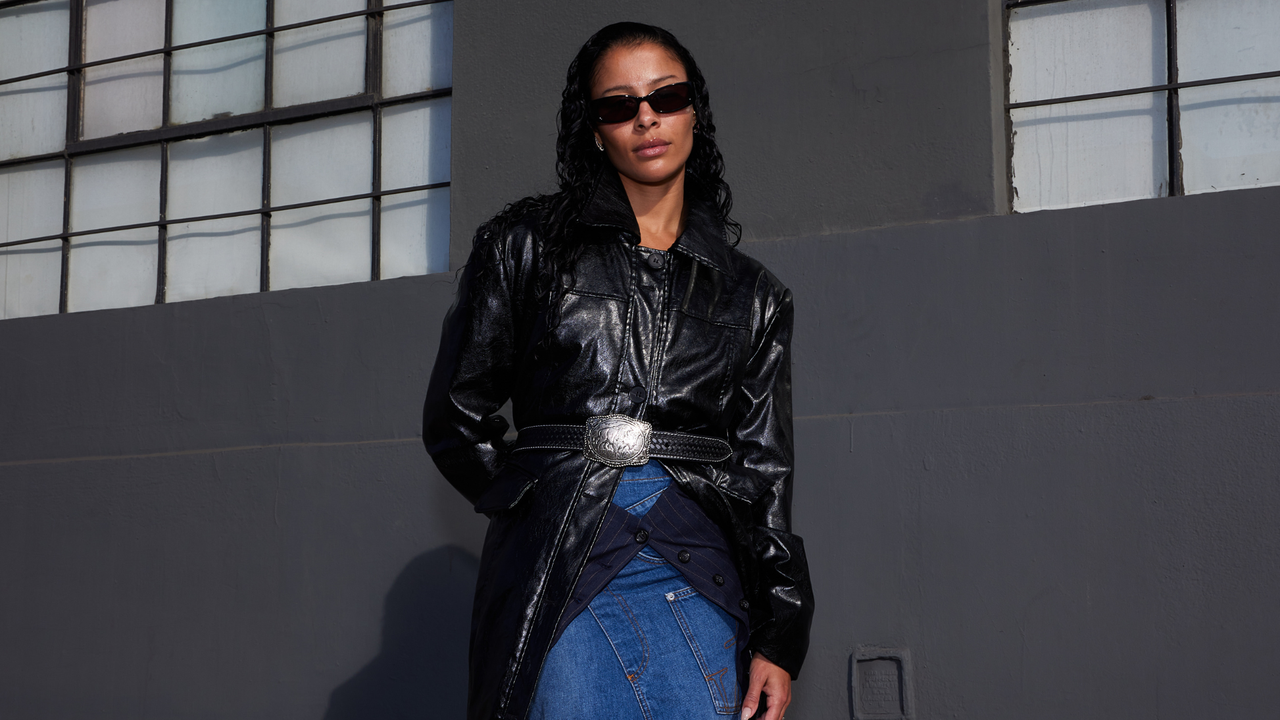Sports
Grateful Dead’s Mickey Hart explores connection of music, sports in new film

The movie “Rhythm Masters” is rooted in Grateful Dead drummer Mickey Hart’s lifelong explorations of elite competition and rhythmic entrainment. Mickey, who has been one of the world’s leading percussionists for six decades now, is a lifelong, obsessive sports fan. He comes by this love honestly. In 1962, at 19, he dropped out of high school to join the Air Force. “I was failing everything in school except music and Phys Ed,” Hart says. Both his parents played percussion, and he’d taken lessons growing up. The Air Force was recruiting the best drummers to join the elite Blue Eagles. “These were men,” he says, sighing at the memory. “I was just a boy.”
He did his best to keep up though, and at about the same time found himself assigned to an Air Force judo team. Ask him now how Michael Hartman, a Jewish kid from New York City, became a space cowboy named Mickey Hart in a band specializing in “the transportation business,” and he’ll point to those days in ’62 when rhythm at the kit and the rhythm of moving on the mats connected inside him as extensions of and improvisations on the same impulse. He turned it into a life — a way of being invented out of tiny vibrating particles, a way of tuning into the rhythms echoing all around us. He’s been on a voyage of exploration ever since. With the Grateful Dead, with Planet Drum, with Dead & Company — and for the last three years, with a team from ESPN.
The animating idea of “Rhythm Masters” emerged from decades of conversations between Mickey and his best friend (and our beloved late ESPN colleague), Bill Walton. He and Bill would often sit and daydream and play together in the studio. They sometimes talked about replacing announcers with drums — using the tools of Mickey’s world to bring new understanding to Bill’s — to see if music could unlock something about athletic performance, movement and collaboration that words could not. That led to a meeting out at Mickey’s office with a team of us — producers and director from ESPN and engineers and musicians from Mickey’s studio — where we started to formulate the basic idea that would become “Rhythm Masters.” Mickey said he saw deep connections between music and sports, especially around ideas like flow state and the ability to connect and communicate on a cosmic, non-verbal level with fellow travelers. We said we could help him set up interviews with some of the greatest living athletes and coaches — everyone from Bob Cousy and Jack Nicklaus to Marshawn Lynch and Mikaela Shiffrin. Over the course of months’ worth of conversations, I loved listening to Mickey talk to these people because it often seemed like he was asking them things nobody had ever asked them before.
We dialed Mickey into the ESPN archives and sent him highlights to go with his interviews. With all that information, Mickey got into his studio and started composing original music, inspired by the sports playing around the clock on the screens in his control room. We played Jesse Owens at the Berlin Olympics. Mike Singletary and Dick Butkus leveling opposing receivers and running backs. Joe DiMaggio taking batting practice, Mickey Mantle in the box, Ted Williams in his final at bat. Ken Griffey Jr. Bo Jackson. We cued up Herschel Walker and Barry Sanders, Johnny Unitas, Patrick Mahomes, Michael Phelps and Tiger Woods. We watched Magic and the Showtime Lakers on the break, Bill Walsh’s West Coast offense throwing darts to the flat, and the LSU Tigers coming out of the tunnel into the ominous, vibrating Baton Rouge nighttime. Death Valley. Themes and motifs emerged. Power, timing, speed. Hour after hour, Mickey layered different beats, patterns and drones under and within the rhythms of the clips. You could feel the conversation happening — the visuals, so familiar, made new by the sounds accompanying them and the music lifted into a new place by the shots and sequences of athletes in motion.
Music and movement flow from the same time in history, it turns out, as Bronze Age hunter gatherers created the first villages and proto-civilizations. An early ancestor of soccer appeared in China in around 3000 BCE, the same time as alligator skin drums. Mickey loves to collect and store information — NASA documents about interstellar telescopes, a whole series of cut and pasted quantum physics data, quotes from Jimi Hendrix and Nelson Mandela, thousands of quotes, really — he loves quotes — plus tens of thousands of pages including polished memoir chapters and stream-of-consciousness riffs.
As we worked on the film, he’d send us huge files that quoted Bernard d’Espagnat, the French theoretical physicist and philosopher of science, or Bruce Lee, the legendary martial artist. Time is at the heart of all that is important to human beings. That’s what d’Espagnat said. Time is the measurement of rhythm. Rhythm the experience of time. The measurement of Mickey’s experience and memory and aspirations.
The film, Mickey told me one afternoon, “should end on a note of sports enhances life. The idea is that sports is not there just to play. The real reason is raised consciousness. The ability of rhythmic entrainment to get into the space of the now.”
The space. Of the now.
“The moment is like geography,” he said. “There is a geography to the moment.”
He’s been on stages in these trances, each one a dot on a nautical chart, workaday union arenas in Midwestern industrial centers, big Gothic college gymnasiums, the foot of the Great Pyramids and the Pyramid in Memphis (now a Bass Pro Shop), Shoreline Amphitheatre, Red Rocks, Nassau Coliseum, RFK. But he doesn’t mean physical places on the planet. He means inside every living soul.
“I can show you the map,” he said. “I can describe where the now lives in consciousness. A movie as a map to the now. It raises my consciousness just watching it. Sports is a pathway to the now.”
A rock show, sports as yoga, sports as communion trance. Water, sun, wind. A clock running out of time.
“Like Magellan?” I asked. “Right? Sports makes you Magellan. You’re looking for a new world.”
“Tigers in coliseums,” he said.
Conversations with the Rhythm Masters
MICKEY HART: If you’re a great player, it doesn’t mean a thing in a band, in a group setting, if you’re playing alone and there’s a group out there in sync. … In any team sport, that’s very important, the synchrony of it all, the flow of it. How do you get [players] to understand about flow?
PHIL JACKSON: You try to implement it through various means. It’s got to come almost naturally. This is something that’s got to rise. I used to talk about the basketball. … It was kind of like a jazz group. They had the opportunity to go off on their own and have their own little riff, but they always had the idea that where we are as a group — with their positions on the players and where they were in sync with that — so they could go off on their own, but they had to come back to the group. Someone push a little solo, get out there and do your thing. Always part of that, right? You’re always part of the thing.
HART: You got to come back. Well, that’s jazz because you’re improvising much of the time. Most of the time we were improvising.
JACKSON: Seventy-five percent of the time, you know, these plays don’t work. The coaches, you know, practice and they get their teams to try and do these plays. And 75% of the time they don’t work. They have to improvise at the end of all that action.
HART: How does rhythm contribute to your game?
JOE MONTANA You can feel it right away. The ball comes out of your hand earlier, you’re anticipating, you know where the holes are going to be, or where you got to throw to a back shoulder, which they do a lot of. It’s all rhythm and timing between the quarterback and the receivers.
That takes a lot of work to get that done. As you know, when you’re working with more than one person, there’s a lot of things that have to happen together, and it takes a lot of practice to get them in rhythm together. But once you feel it, it’s hard to stop you.
HART: You’re a power player. Can you tell me, how do you raise your power? How do you raise that power to be able to call yourself Beast Mode?
MARSHAWN LYNCH: For one, I’m old school. So you kind of don’t get the opportunity to make your nickname or call yourself something. This was given to you by the people. So I mean, you know, there’s many ways in which you raise your power. One, you get in the lab, you get back to the gym. You put in the work and that’s one way and one source to go ahead and raise your power. But realistically, it’s a mental thing because now, what you have to do is, you have to use your mental ability in order to get the defenders thinking out of the box.
So mentally was where my power came from. You use words as an illusion. Individuals hear ‘beast’ and they think ‘power.’ And I think they overstep or they misread what the word actually means. Because then there is a situation where you got this beast running at you and all you do is think “power,” and you brace yourself for power. And then the next thing you know, I hit you with a jump cut and that’s considered a missed tackle.
HART The sensation of moving fast. Few people could have ever felt what you have felt. Tell me about moving fast, really fast.
JACKIE JOYNER-KERSEE The sensation of moving fast is like you’re not moving at all. You can’t even quantify or even describe it because it’s like you’re moving with the wind and it’s just exhilarating. And when you realize how fast you have gone, it was like, whoa. So compare it to when you can feel like you’re running fast, it’s like running in mud or quicksand.
You know, you’re not moving at all. And then you’re wondering what’s going on. But the feeling of being able to move fast in a way that is so indescribable, it is unreal. When you measure and see the time like, wow, I didn’t even know I was moving that fast.
So when you talk about the now, nothing else matters. It’s almost connecting the physical and mental agility. So you bring in all these pieces together and you’re blocking out all the noise, you come into that zone. Now you’re going to execute what you’ve been prepared to do. And so you get out there, you run fast, you throw fast, you just do it with an ability that, in the eyes of others, appears to be easy but is extremely difficult.
HART: You try to get into the flow, into the zone. We call it the zone, we call it the moment. That’s what we do in music. How do you describe that?
JACK NICKLAUS: I focused on what I wanted to do, and I just went ahead and did it. There weren’t any secrets for me. A lot of the other guys came along and they asked me, how do you do that? I said, I think that you have to understand who you are, what you can do, and what you can focus on. Know what your abilities are and do things inside of your abilities. And that’s basically what I did most of my life.
HART: How do you keep your endurance and your focus up? I play three hours a night and you’re out there four hours. How do you get the power?
NICKLAUS: You don’t have to focus all the time. You only have to focus when you’re playing. You’re only going to hit 30 some shots during the round and then you got your chipping and putting.
HART: What is the mental work to endure?
MIKAELA SHIFFRIN: I think so much of life is that we excel in spaces where we feel certain and familiar. And when I finally got back on to the slopes and back into the starting gate, that’s where I feel the most familiar. It’s an uncomfortable place to be. It’s stressful, there’s pressure, there’s nerves. There’s a lot of uncertainty.
But somehow it’s the kind of uncomfortable place that I’m familiar with. So that’s something I’m learning more and more about. And as I understand more about myself as well, to understand I can be comfortable in really uncomfortable situations when I’m particularly familiar with them. What I’m not very familiar with is actually the process of rehab and being sidelined from racing and from training.
You struggle to do a lateral squat in the gym with just your body weight when you’re used to flinging yourself down the mountain with razor sharp metal edges on an icy slope because they literally inject water into it. That doesn’t seem like a particularly smart thing to do, but it’s something I’m familiar with and it’s what I’m actually good at.
I think we gravitate toward spaces that we’re familiar with, and then we push ourselves to new boundaries in those spaces. And with injuries, it really shifts your world a little bit to try to understand how you, as an athlete, how you still push yourself to push your own boundaries in a completely unfamiliar spot.
HART: Everything comes down to rhythm. So I’d like to ask you, what does rhythm mean to you?
BOB COUSY: We’re talking about art-form types that affect the beholder. You’re getting a reaction from people who go to the Louvre and look at all the wonderful paintings and sculptures. Just like people react to your music. In sports, if someone is out of rhythm, the thing doesn’t work.
And like an artist, you want successful fruition to what you’ve just created. Going in and slam-dunking it and 80,000 people exploding is what gives you your sense of accomplishment. But that changes every freakin’ time down the floor because the defenders do different things and you respond differently. That’s what makes it an art form, in my judgment. It’s never the same. You don’t know what’s going to happen.
HART: Whether on the court or on stage, where nothing else matters except the task at hand — how does this intense focus contribute to your experience of flow in sports and music?
COUSY: We are so lucky to have had our mediums to express ourselves and to experience this kind of exhilaration, or sense of completion, that most people really go through a lifetime and never experience it once.
Sports and music are opportunities of expression that give you so much satisfaction. But it’s hard to explain. People have to experience it. … I say I’ve loved listening to music all my life. And it is a genuine art form, and I’m sorry that I didn’t get the experience of being a Deadhead. My buddy Walton was right.








